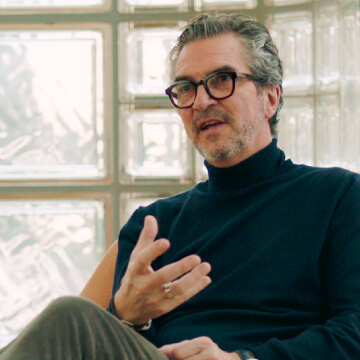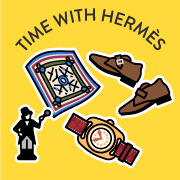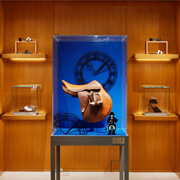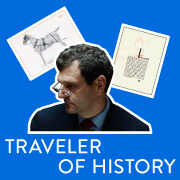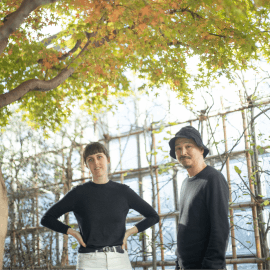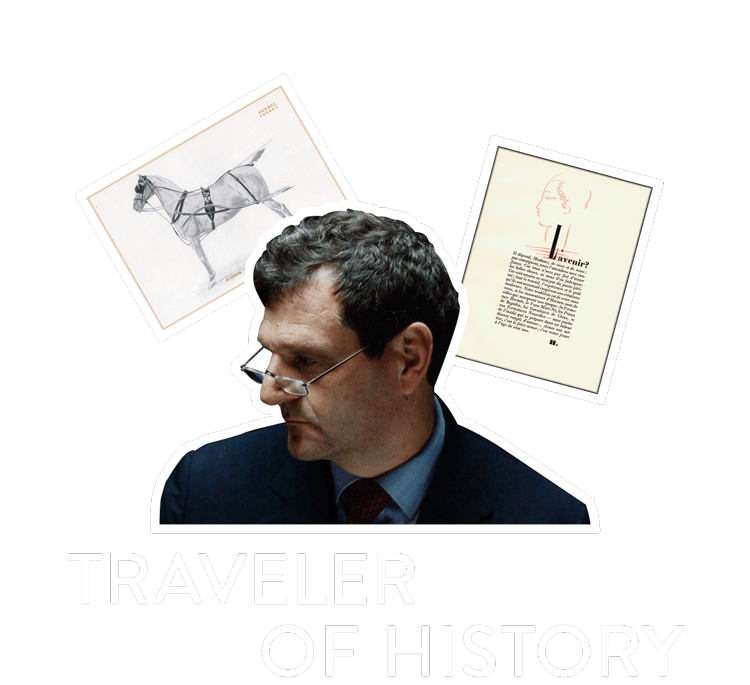
SPECIAL CONTENTS
Traveler of history
The Conservatoire des Créations Hermès is tasked with collecting, classifying, and preserving every objet made by Hermès to date so that they may be passed on to future generations. Many of the maison's older creations are hard to find, and even the most familiar bag has come in many variations over the years. It requires tenacity and hard work to understand how every objet was created so one can fill in the blanks of missing information, but Marc Stoltz is up to the task. As the curator of the Conservatoire, the curious, enthusiastic, and outgoing Stoltz offers a glimpse into Hermès’s history since its founding in 1837.
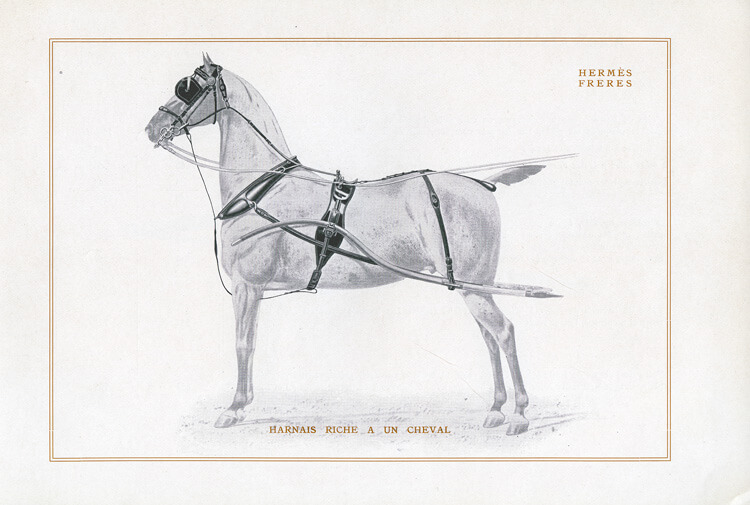
From the Hermès Frères harness and saddlery catalogue, 1912. The caption reads: “Rich harness for a horse”. Archives Hermès. © Hermès 2024

“Hermès time” at
the Conservatoire
Our role at the Conservatoire is first and foremost to conserve a variety of objets created from the founding of Hermès through to the present day. We use the phrase “Hermès time” to describe the unique way in which we conceptualize time, which has to do with both forgetting and creating. An object that has been crafted with care will last a very long time, and the longer it is around, the more it takes on a patina of age. It is no coincidence that this kind of weathered appearance can be seen on many of the objets at the Conservatoire.
A representation of
Hermès time
Personally, I think that the objet that best illustrates the notion of Hermès time is the Guard’s Bag, an item that has mostly been lost to time. These bags were used by carriage drivers long ago to carry necessary items such as maps of their route and the keys to the luggage compartment. The bags came with an integrated watch that the coachdrivers used to maintain a steady pace as they traveled between stations, helping them arrive at the next stop on time.

Links to the past
If you think of the history of Hermès as spanning a thousand years, you will see that there is nothing old-fashioned or outdated about this maison. We see the past as a wellspring of knowledge that inspires the product names and creative processes that we rely on in the present. Our artisans still work by hand in the traditional manner, sewing leather with an awl and linen thread. It is not because of any reluctance to rely on machines but because their hands offer a level of precision and creative freedom that has yet to be replicated by machinery.
Returning home after
a journey to the past
The past is a source of inspiration, but we always visit it with contemporary eyes. Objets from the past therefore inform us and teach us, broadening our viewpoints and perspectives on the world. The founding of the Conservatoire was an almost instinctive move on the part of former chairman Jean-Louis Dumas. He once told me that building a Conservatoire filled with objets from the past was in some way preparation for the future.
Telling stories and transcending time
Hermès is fundamentally a poet in the historical sense. Our poetic approach to craftsmanship can be read in a multitude of ways, but above all, in the way that it speaks to the senses. When an objet’s form, finish, and function are approached with propriety and elegance, it is given the power to tell us its story. Hermès’s ability to tell stories and transcend time is what sets us apart. The theory behind the act of creation is straightforward—to make something beautiful. And the more beautiful it is, the longer it will last!

A repository of
meaningful connections
The Conservatoire is both a place of collection and a crossroads that brings together every one of Hermès’s métiers (product departments). It is also a place of research, of forming hypotheses about the objets in our collection and exploring them. To understand these objets, we first try to find the commonalities between their diverse appearances. From these hypothetical links, we unearth the meaning of each objet and its connections to the other objets. Our greatest joy comes from sharing this experience with visitors.
Passing down history
In a sense, it is Hermès’s long history that gives each objet its soul. It is up to us to guide visitors to the secrets that might otherwise remain buried, to shine a light on the hidden facets that lie beneath the surface. You have to make people love these objets in order to understand them, and conversely, make people understand the objets so they are able to love them!
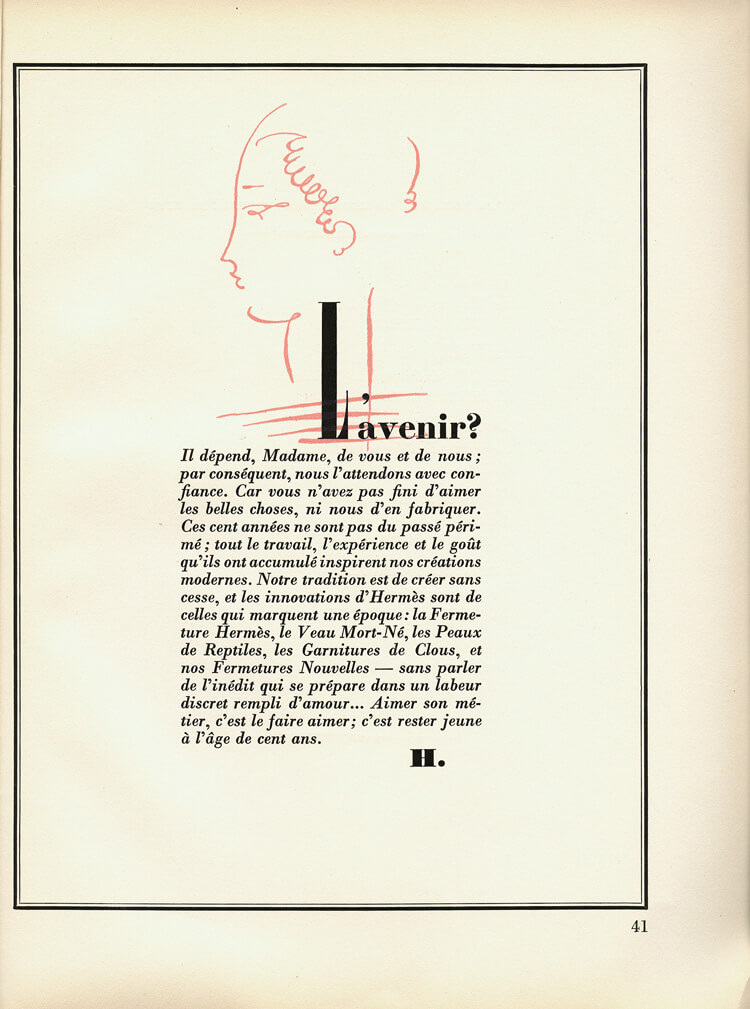
From the One Hundred Years, or Some Reflections on the Private Collection of Mr. H*** catalogue, 1928. Archives Hermès. © Hermès 2024
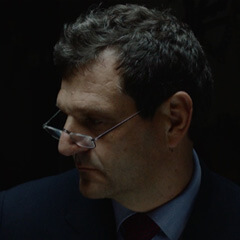
Marc Stoltz
Marc Stoltz is the curator of the Conservatoire des Créations Hermès. He studied philosophy and administrative law in school, but his passion is for handicrafts, especially leatherwork. In the summer of 1989, Stoltz served a one-month apprenticeship in the leather workshop at the flagship Hermès Paris Faubourg Saint Honoré store. He is still there 34 years later, overseeing the Conservatoire.


